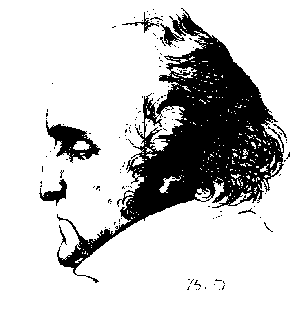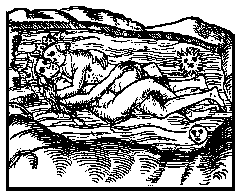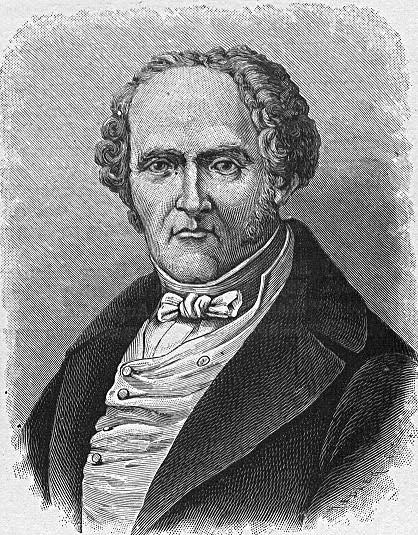Fourier Charles - Il nuovo mondo amoroso
Il nuovo mondo amoroso", uno dei testi più grandiosi e radicali del pensiero occidentale, in cui Charles Fourier - il "sognatore sublime", come lo definisce Stendhal - descrive gli amori poligamici nella società d'Armonia, vide la luce in Francia solo nel 1967, centotrenta anni dopo la sua stesura. "Il fourierismo è un eudemonismo radicale" scrive Barthes nel saggio che introduce questa edizione integrale dell'opera. "Il piacere fourierista (chiamato felicità positiva) è molto facile da definire: è il piacere sensuale: "la libertà amorosa, la buona tavola, la spensieratezza e altri godimenti che le Civiltà non pensano nemmeno di desiderare, perché la filosofia le abitua a trattare da vizio il desiderio dei veri beni". [...] Il piacere fourierista non si compenetra di alcun male: non integra la vessazione, alla maniera sadiana, al contrario l'evapora; il suo discorso è quello della "benevolenza generale": ad esempio, nella guerra d'amore (gioco e teatro), per delicatezza, per non offendere, le bandiere e i capi non vengono catturati. Se però, in Armonia, si arriva a soffrire, è tutta la società che si adopera a stordirvi: avete avuto qualche sconfitta in amore, siete stati messi alla porta, le Baccanti, le Avventuriere e altre corporazioni di piacere vi circondano e vi trascinano, cancellano immediatamente il dolo di cui siete stati vittima. Ecco dunque il piacere solo e trionfante regnare su tutto."
Charles Fourier, Le nouveau monde amoureux (1816).
classiques.uqac.ca/.../fourier_charles/nouveau_monde_amoureu...
«Il capitolo dell'amore, che si credeva esaurito, è appena iniziato; stiamo per entrare in un nuovo mondo amoroso in cui tutto sarà per noi sorprendente e nuovo, come la flora dell'America per i primi che vi sbarcarono»
Il nuovo mondo amoroso è un testo pubblicato postumo nel 1967, ben centotrent'anni dopo la sua stesura da parte di Charles Fourier. Si descrive la natura dei nuovi rapporti sessuali, come si svolgeranno nella società utopistica di Armonia.
Gli amori sono suddivisi in cinque tipologie:
- l'ordine semplice: o puramente materiale, o puramente sentimentale (cd. "celadonismo")
- l'ordine composto: sia materiale che sentimentale
- l'ordine poligamo
- l'ordine onnigamo (le orge collettive)
- l'ordine ambiguo (l'omosessualità)
Dagli esempi presenti nel libro, risulta gli incontri erotici avvengono non tanto nel segno dello spontaneità, ma in modo organizzato, quasi dei giochi di ruolo: esistono codici, tribunali, corti, orde, crociate, studio "scientifico" delle affinità ecc. Nel mondo immaginato da Fourier i piaceri diventano affari di stato e ognuno dedica all'amore una parte fissa della giornata: la società nel suo complesso si adopera per garantire a ciascuno (anche gli anziani) il diritto al piacere. Esiste a tal fine un'istituzione specifica, chiamata angelicato: una sorta di prostituzione sacra, a cui sono riservati i massimi onori e privilegi; per accedervi occorre superare una serie di prove amorose.
L'idea di fondo è che la natura ha creato l'amore per moltiplicare i legami sociali, mentre le istituzioni repressive create dalla civiltà, come il matrimonio, ostacolano tali legami. Inoltre il soffocamento di una passione è inefficace, perché ha come effetto di tramutarla in un sentimento nocivo: di qui, secondo l'autore, la genesi del sadismo.
«Ciò che fa piacere a molti senza nuocere a nessuno è sempre un bene del quale bisogna approfittare in armonia, dove i piaceri devono essere variati all'infinito"
Il fourierismo si rivela qui come "eudemonismo radicale": la felicità viene identificata con il piacere, e questo con il piacere fisico, ossia fondamentalmente il cibo e il sesso. In Armonia chi abbia raggiunto un alto livello di saggezza gastronomica e virtù amorosa può infatti ambire ai titoli rispettivamente di "santità" maggiore e minore.
Charles Fourier, avec Le Nouveau Monde amoureux (inédit sulfureux,
cent cinquante ans sous le boisseau jusqu'à son édition critique par
Simone Debout, en 1967) invente une classification systématique des
passions, couronnement de son premier ouvrage Théorie des quatre
mouvements et des destinées générales, digne du système botanique de
Linné et d'une richesse surprenante. L'individu est envisagé dans ses
multiples relations aux autres et lui-même comme le lieu et l'enjeu d'une
multitude de passions contradictoires. Jamais un tel tableau n'avait été
proposé.
Il renouvelle la Carte du tendre, dessinée par Honoré d'Urfé dans l'Astrée et dépasse, outrepasse Sade et Restif de la Bretonne. Visionnaire et utopien, Fourier imagine une société « ouverte », festive et ludique, fondée sur des échanges réciproques et l'émulation, où les nouvelles règles ne sont plus des interdits mais des protocoles de jeux sociaux, érotiques, esthétiques. Il bouleverse l'économie de la domination et du profit et propose une économie de l'imagination fondée sur une autre éducation orientée par le désir et la motivation. Cette nouvelle société n'adviendra qu'avec l'émancipation de la femme et de l'enfant, délivrés du joug patriarcal et de la domination masculine.
André Breton célèbre ce « rêveur absolu » dans son Ode à Fourier. Ce nouveau monde est une rêverie potentielle de l'ÉDEN terrestre, dont rêva Robert Filliou avec son « économie poétique » de la fiesta (dans 100 000 ans peut-être ?).
Il renouvelle la Carte du tendre, dessinée par Honoré d'Urfé dans l'Astrée et dépasse, outrepasse Sade et Restif de la Bretonne. Visionnaire et utopien, Fourier imagine une société « ouverte », festive et ludique, fondée sur des échanges réciproques et l'émulation, où les nouvelles règles ne sont plus des interdits mais des protocoles de jeux sociaux, érotiques, esthétiques. Il bouleverse l'économie de la domination et du profit et propose une économie de l'imagination fondée sur une autre éducation orientée par le désir et la motivation. Cette nouvelle société n'adviendra qu'avec l'émancipation de la femme et de l'enfant, délivrés du joug patriarcal et de la domination masculine.
André Breton célèbre ce « rêveur absolu » dans son Ode à Fourier. Ce nouveau monde est une rêverie potentielle de l'ÉDEN terrestre, dont rêva Robert Filliou avec son « économie poétique » de la fiesta (dans 100 000 ans peut-être ?).
Réimpression du Nouveau Monde amoureux paru aux Presses du réel en 1998 avec la Théorie des quatre mouvements (ISBN 978-2-84066-027-9), qui fait également l'objet d'une réédition séparée.
Cette édition correspond au tome VII de l'édition Anthropos de l'œuvre complète de Charles Fourier (1979).
Cette édition correspond au tome VII de l'édition Anthropos de l'œuvre complète de Charles Fourier (1979).
Charles Fourier (Besançon, 1772 - Paris, 1837),
fondateur de l'Ecole sociétaire,
l'un des principaux représentants du socialisme utopique, théoricien de
l'harmonie universelle et de l'attraction passionnée, est l'inspirateur
d'innombrables communautés utopiques et d'expérimentations sociales
historiques, jusqu'aux développements philosophiques et aux mouvements
culturels qui prolongent sa pensée aujourd'hui.
Les éditions Anthropos ont publié en 1966-68 (édition de Simone Debout) l'œuvre complète de Fourier éditée en 1841, en impression anastaltique. La réédition des œuvres complètes de Charles Fourier est achevée en 2013 aux Presses du réel, avec la constitution d'un index conceptuel général permettant une analyse textuelle de l'ensemble du corpus au travers d'une interface informatique spécifique.
Les presses du réel publient également plusieurs essais critiques (Simone Debout : L'utopie de Charles Fourier ; Patrick Tacussel : L'imaginaire radical - Les mondes possibles et l'esprit utopique selon Charles Fourier). Voir aussi le catalogue Charles Fourier – L'écart absolu ; les Cahiers Charles Fourier ; Bernard Desmars : Militants de l'utopie ? Les fouriéristes dans la seconde moitié du XIXe siècle ; René Schérer : Utopies nomades ; Jonathan Beecher : Victor Considerant – Grandeur et décadence du socialisme romantique ; Auguste Savardan : Un naufrage au Texas...
Les éditions Anthropos ont publié en 1966-68 (édition de Simone Debout) l'œuvre complète de Fourier éditée en 1841, en impression anastaltique. La réédition des œuvres complètes de Charles Fourier est achevée en 2013 aux Presses du réel, avec la constitution d'un index conceptuel général permettant une analyse textuelle de l'ensemble du corpus au travers d'une interface informatique spécifique.
Les presses du réel publient également plusieurs essais critiques (Simone Debout : L'utopie de Charles Fourier ; Patrick Tacussel : L'imaginaire radical - Les mondes possibles et l'esprit utopique selon Charles Fourier). Voir aussi le catalogue Charles Fourier – L'écart absolu ; les Cahiers Charles Fourier ; Bernard Desmars : Militants de l'utopie ? Les fouriéristes dans la seconde moitié du XIXe siècle ; René Schérer : Utopies nomades ; Jonathan Beecher : Victor Considerant – Grandeur et décadence du socialisme romantique ; Auguste Savardan : Un naufrage au Texas...
Fourier: 'The Theory of the Four Movements'
This remarkable book, written soon after the French Revolution,
has traditionally been considered one of the founding documents in the
history of socialism. It introduces the best-known and most
extraordinary utopia written in the last two centuries. Charles Fourier
was among the first to formulate a right to a minimum standard of life.
His radical approach involved a systematic critique of work, marriage
and patriarchy, together with a parallel right to a sexual minimum. He
also proposed a comprehensive alternative to the Christian religion.
Finally, through the medium of a bizarre and extraordinary cosmology,
Fourier argued that the poor state of the planet is the result of the
evil practices of civilisation. Translated into English, this classic
text will be of particular interest to students and scholars of the
history of sexuality and feminism, political thought and socialism.
• First English translation of the complete text • Interdisciplinary interest; history of sexuality and feminism, as well as history of political thought
• First English translation of the complete text • Interdisciplinary interest; history of sexuality and feminism, as well as history of political thought
Contents
Introduction; Principal events in Fourier's life; Brief note on further reading (in English); Translator's introduction; Theory of the four movements and of the general destinies; 1808 Introduction; First part; Second part; Third part; Omitted chapter; Note A; Advice to the civilised; 1818 Introduction.Fourier: 'The Theory of the Four Movements'
Cambridge University Press, 22 feb 1996 - 328 pagine
This
remarkable book, written soon after the French Revolution, has
traditionally been considered one of the founding documents in the
history of socialism. It introduces the best known and most
extraordinary Utopia written in the past two centuries. Charles Fourier
was among the first to formulate a right to a minimum standard of life.
His radical approach involved a systematic critique of work, marriage
and patriarchy, together with a parallel right to a "sexual minimum."
-
There were two Fouriers: the mathematician Joseph
(1768-1830) and the socialist reformer Charles (1772-1837), both
studying Harmonic Analysis and building series - although in very
different ways... Here we deal only with Charles.

Céladonie
"Je vais plaider la plus ridicule des causes; il n'existe rien de plus bafoué en civilisation que l'amour sentimental."
"I will plead the most ridiculous of all causes; nothing is more flouted in civilization than sentimental love."
Charles Fourier,The sublime passion that makes humans feel like gods, seemingly useless and irrational, mysterious and uncontrollable, always surging despite repression, the longing of both the rich and the poor... What are its degrees? How can it be achieved? Here are its possible developments, ranked by increasing efficiency:
Le Nouveau Monde Amoureux.
- simple celadony: one purely spiritual relation;
- composite celadony: one compound relation (both physical and spiritual);
- bimodal celadony: one spiritual relation and one compound relation;
- multimodal celadony: one spiritual relation and several compound relations.
Celadony is incompatible with Savage, Patriarcal, Barbarian, and Civilized orders, it will be achieved under Harmony.
More on Celadony
Composite Charm
Civilized failures
 |
| (Image from the Alchemy Virtual Library) |
The 12 + 1 passions
Luxurism: the 5 senses
Sight, hearing, touch, taste, smell.Groupism: the 4 cardinal (affective) passions
Major string: ambition (or honour, glory, interest) and friendship.Minor string: love (or celadony) and familism (or parenthood).
Seriism: the 3 distributive (or mechanizing) passions
Cabalist (or Dissenting or Graduating): conscious exaltation produced by divisions in a domain according to minute differences.Flitting (or Alternating): need to always change activities and pleasures.
Composite (or Coinciding or Meshing): blind exaltation produced by the combination of stimulations or pleasures from different orders.
The union of luxurism and groupism, mechanized by the 3 distributive passions, leads to unityism, the feeling of oneness between the individual and the multitude.
The 3 focuses of passions
The 4 cardinal passions
The 3 distributive passions
 |
| (Image from the Alchemy Virtual Library) |
Modes of relationship
All passions, in particular gastrosophy and love, can be envisaged at several levels, classified according to the following scale:- Unimode: simple (a single passion) or composite (combining spiritual and material passions), but restricted to the smallest combination of people.
- Bimode: a person is involved with more than one other person, so that links can be chained.
- Multimode: a big group joining together.
- Omnimode: an international mass movement gathered for that purpose.
More on relationship modes
A walk on a triniverse
The New Industrial World
 |
| (Image from the Perry-Castañeda Library of the University of Texas at Austin) |
Every member of the whirl (phalanx) is led by attraction to practice about 40 crafts; for each one of them (s)he joins a group. Groups dealing with close specialities are hierarchically assembled into graduated series. The 3 distributive passions are satisfied thanks to the following features:
- Cabalist: minute differences of interest between neighbouring groups within a series lead to emulation between these groups.
- Flitting: work sessions do not last more than 2 hours, so that different activities alternate during each day.
- Composite: a group's work is divided into sections, and each member chooses to practice those that (s)he likes.
Harmonian education starts from practice, leading then to theory. Children learn first to refine their senses, next start practising various crafts to which they are attracted. Only after mastering various practical skills are they taught to read and write.
Series
Attractions are proportional to essential destinies
 An exegesis of André Breton's
Ode à Charles Fourier.
An exegesis of André Breton's
Ode à Charles Fourier.Fourierism and Utopia in the USA.

- Charles Fourier's grave (yet another picture by Chuck Ralston).
- A poem by Guy Davenport.
- Cahiers Charles Fourier.
- F. Engels on Charles Fourier.
- A quote from Fourier's Theory of Social Organization (English translation: C. P. Somerby, New York, 1876).
- The Boreal Crown and the Downfall of Civilization (anonymous).
- Reproduction of an article published in El Independiente on September the 29th, 1990 (in Spanish). Illustrated with pictures and translated text from this site.
- The History Guide on Fourier.
Texts available on the Web (in French)
- Some quotes.
- Two
texts:
- Tableau analytique du cocuage (also on Wikisource).
- Egarement de la raison démontré par les ridicules des sciences incertaines.
- Several old editions of Fourier's works have been digitized by the Bibliothèque nationale de France (in Adobe PDF format).
- Several works have been retyped, available in Word, PDF and RTF at the UQAC
Published works (in French)
- Théorie des Quatres Mouvements et des Destinées Générales and Théorie de l'Unité Universelle (2 Vols.), published in the Collection "L'écart absolu" by Les Presses du Réel.
- Le charme composé and Citerlogue, published by Editions Fata Morgana.
- Le Nouveau monde amoureux, published by Stock.
| The Crown Imperial (Fritillaria imperialis), Charles Fourier's emblematic flower |  |
According to popular wisdom, it symbolizes majesty. For Fourier, it represents the true scientist or artist living poorly in Civilization, whose worth is not recognized, and who has only his enthusiasm to sustain himself. |













Nessun commento:
Posta un commento